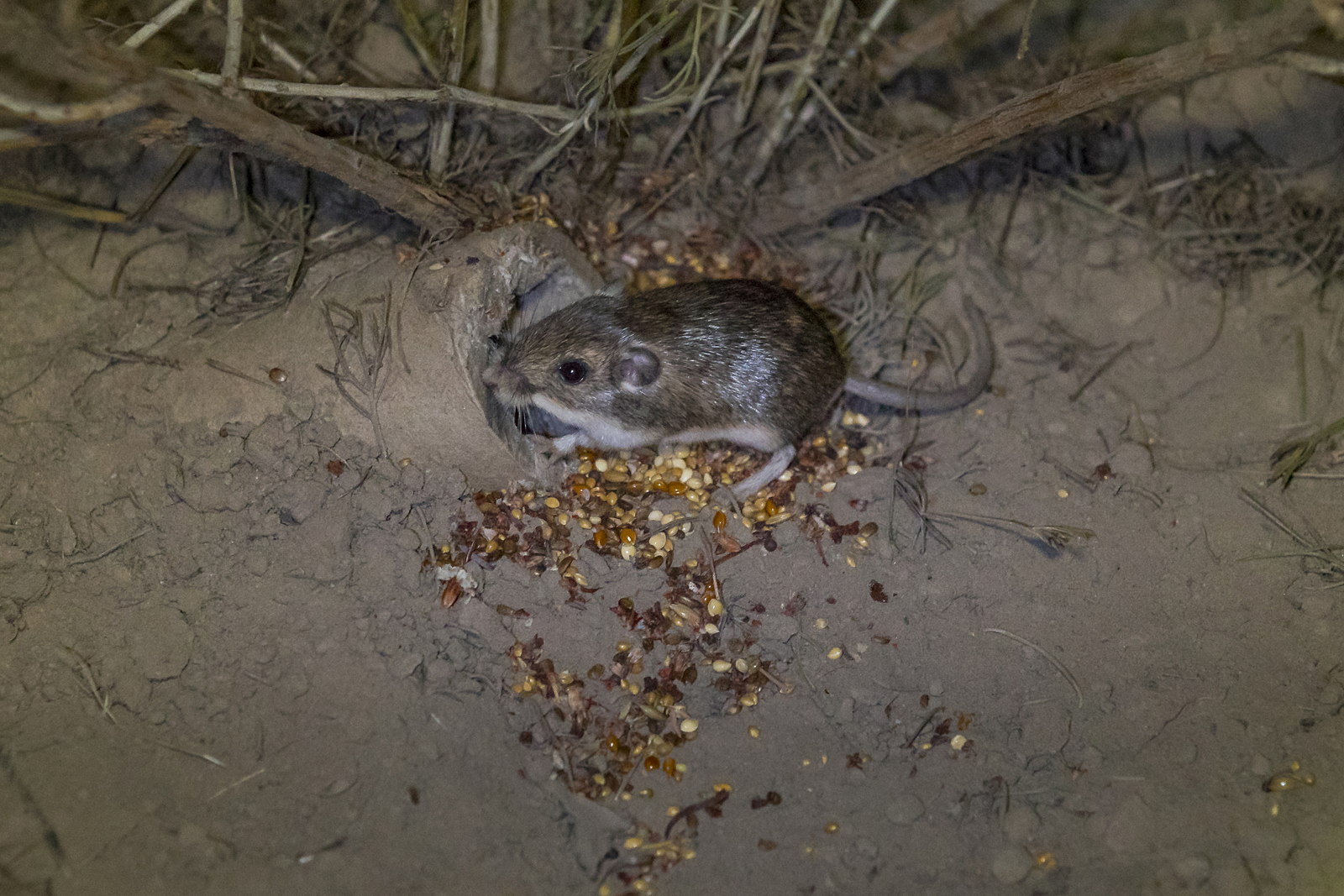
New Digs for 25 Endangered Pacific Pocket Mice at Laguna Coast Wilderness Park
It’s a big week for 25 endangered Pacific pocket mice, as they moved into their new home at Laguna Coast Wilderness Park. Conservationists from the San Diego Zoo Institute for Conservation Research, the U.S. Fish and Wildlife Service; and the California Department of Fish and Wildlife—working closely with OC Parks—released these native Southern California coastal mice following a successful breeding season this year. The release followed one week of acclimation, during which the mice spent time inside their biodegradable man-made burrows before being released into a 1.6 -acre fenced habitat that will provide them a semi-controlled environment as they get used to living on their own. Over the next few weeks, the science team will monitor the group and supplement the food supply—gradually lessening their involvement as the mice figure out how to gather their own nourishment and navigate potential dangers in their new surroundings.
This latest release comes almost one year after conservationists released 50 mice in Laguna Coast Wilderness Park—the first-ever group of Pacific pocket mice to be bred and released back into their native range. Conservationists said they hope the new arrivals will follow in the footsteps of the last group and spread out throughout the preserve. They also expressed excitement about the future of this important program, and are more confident about the outlook for this tiny mammal.
“I’m very pleased on where we are in the fifth year of this program,” said Debra Shier, Ph. D., Brown Endowed Associate Director of Recovery Ecology at the Institute for Conservation Research. “I think if we continue on this trajectory, we will have successfully established a new population in the wild.”
The Pacific pocket mouse breeding program is managed by the staff at the San Diego Zoo Institute for Conservation Research, in cooperation with the U.S. Fish and Wildlife Service and the California Department of Fish and Wildlife. Starting in 2012, 34 adult Pacific pocket mice were taken from the three remaining wild populations to participate in this breeding program, at an off-exhibit area at the San Diego Zoo Safari Park. To prepare the mice for their life in the wilderness, the breeding facility uses air conditioning and humidifiers to mimic the coastal temperatures and humidity these mice require. The facility is also equipped with large skylights to make sure these nocturnal animals are attuned to the rising and setting of the sun, which cues their activities. Scientists train the mice to spot potential threats and recognize food that they will likely encounter in the wilderness.
The Pacific pocket mouse is the smallest mouse species in North America, with adults typically weighing between 6 and 7 grams—about the same as three pennies. The subspecies, thought to be extinct in the 1980s, was rediscovered in 1993. It is currently listed as Endangered under the U.S. Endangered Species Act. Scientists consider these mice vital to their ecosystem, due to their function as seed dispersers for native plants throughout their habitat. They also dig burrows that hydrate and increase nutrient cycling in the soil, which encourages growth of native plants.














